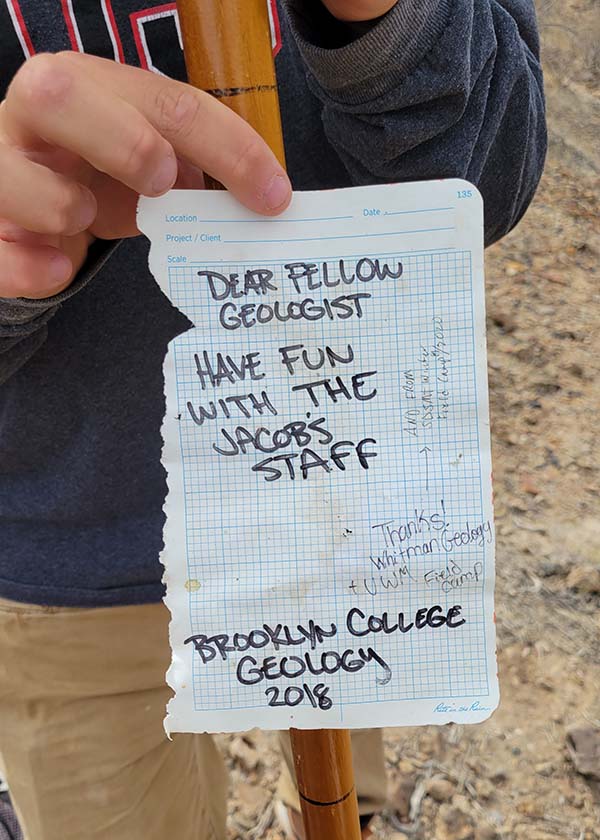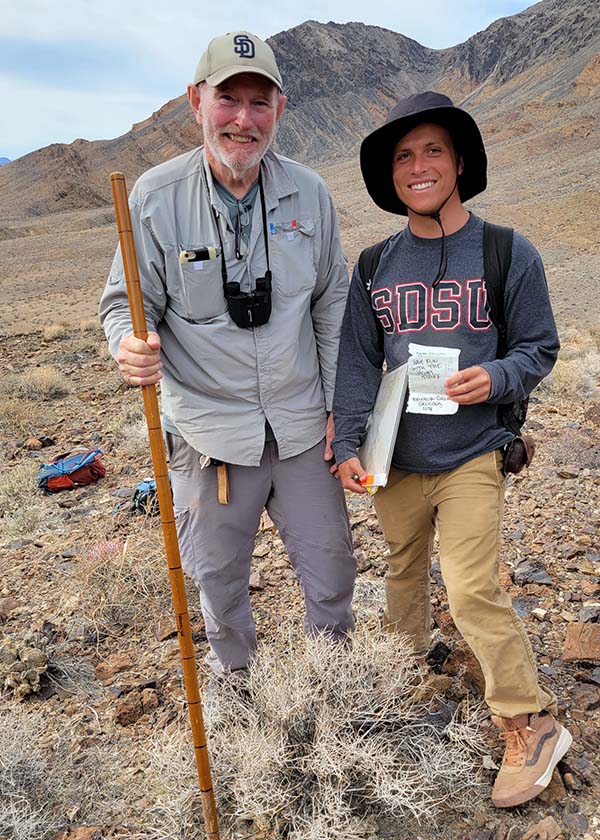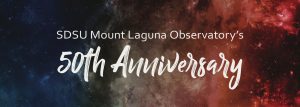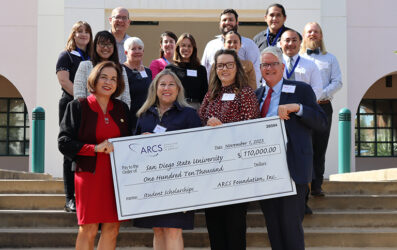After an hour of driving from the California State University-run Desert Studies Center – a former Civil War-era U.S. Army outpost and 1970s mineral springs spa in Zzyzx along Interstate 15 – and several hours traipsing around Death Valley under the late March sun, wind whipping in his face, San Diego State University geology major Brian Gorberg ran out of water.
A day and a half into a field trip to gain hands-on experience with professional geology techniques, Gorberg turned to the course’s teaching assistant Jasmine Peach for help. While Gorberg and a couple classmates refilled their water bottles, Peach marked an ‘x’ on their maps, hinting that some interesting geological features to identify for their class assignment might be nearby.
“I thought there might be a cool cave or something,” Gorberg said.
What he didn’t expect to find, jutting up out of the ground on a hillside, was a meter-and-a-half tall polished wood stick called a Jacob’s staff with a scrap of waterproof paper, scrawled with messages from students who had traveled from New York, Washington, Wisconsin and South Dakota years prior.


Geologists use a Jacob’s staff, which has marks at regularly spaced intervals, to measure the thicknesses of different layers of sediment. Gorberg trekked around with the staff, more elegant than the PVC pipe versions the class had brought along, before returning it for future geologists to find.
Spontaneous adventures and the close-knit nature of the geology community have been defining features for the 2022 Department of Geological Sciences Outstanding Graduate since the sunny weather and surfable waves lured him away from the East Coast.
Off-Campus Expeditions
One highlight of Gorberg’s time at SDSU was the annual department field trip to the Grand Canyon.
During the long days studying faults and finding clues about the geologic history of Arizona, Gorberg looked forward to hearty dinners of steak and potatoes, always followed by delectable desserts like cookies or pie.
“In geology, you need to be with people. Everyone helps each other out and gives different opinions,” Gorberg said.
Although everyone worked together in the field and in the kitchen, Gorberg credits alumna Joan Kimbrough with the continued success of the four-day trip and the relatively low total cost of $70 per person.
“She’s the best and everyone’s helper. She hooks up with all this food and is always on a budget,” Gorberg said.
When COVID-19 impeded in-person interaction, Gorberg made the most of it and got a month-to-month lease in Hawaii. He completed his general education requirement courses online while teaching surf lessons, appreciating how the variations in the seafloor affect the crashing of waves and the quantity of microshells in the islands’ carbonate sand beaches.
Mapping Out the Future
Upon returning to campus, Gorberg enrolled in the structural geology class taught by Rafael Almeida, who recommended graduate school as a next destination.
Gorberg was unsure because the only research experience he had was, at Dave Kimbrough’s suggestion, analyzing petroleum geology datasets as part of the Imperial Barrel Award competition.
Connecting with a hydrologist through the Aztec Mentor Program helped Gorberg solidify his decision to apply after the fall semester.
He will return to Honolulu to earn his master’s degree researching groundwater. He hopes to further develop his computational skills which, in addition to class field trips, have given him “a new way of looking at the world.”



